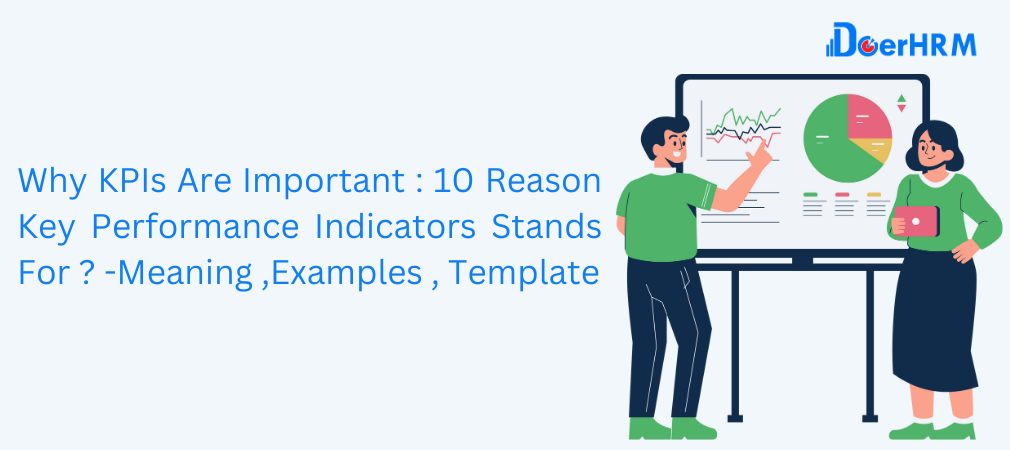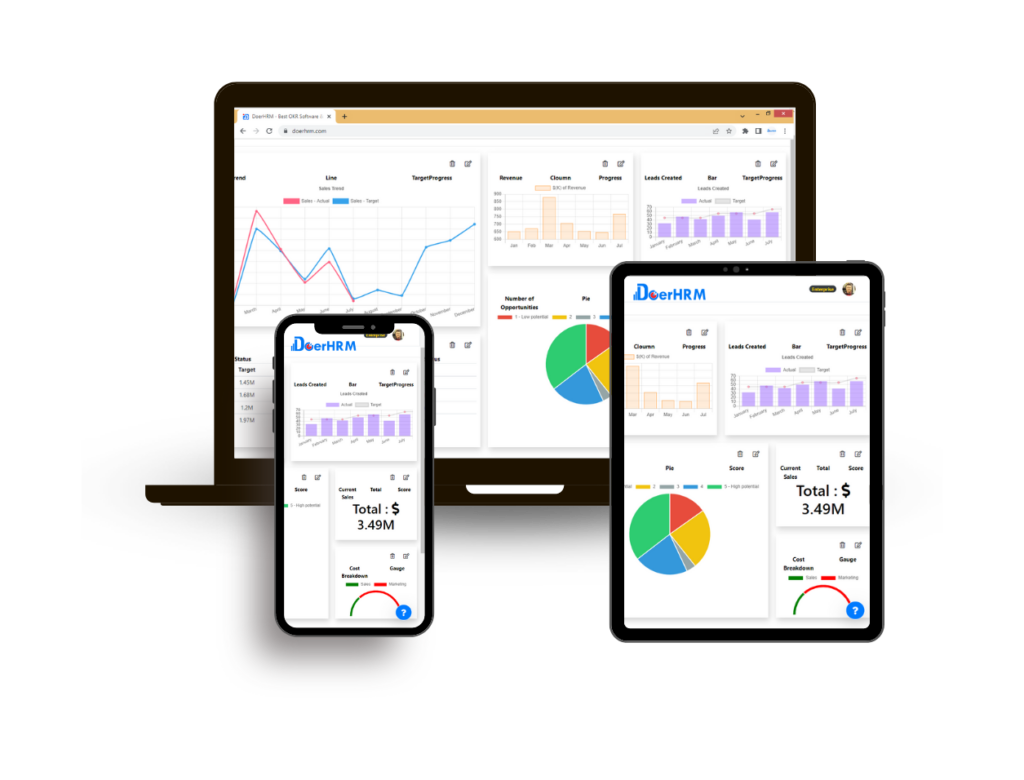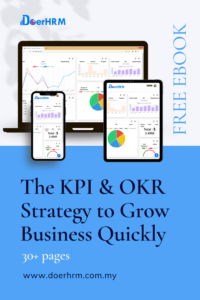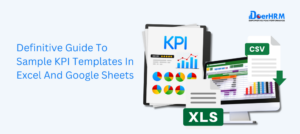KPIs, or Key Performance Indicators, are a set of quantifiable metrics that businesses use to track and measure progress towards specific goals and objectives. KPIs help businesses to identify areas of success, as well as areas that need improvement.
Tracking performance metrics in business is crucial for several reasons. Firstly, it allows businesses to measure progress and success. By setting measurable goals and tracking KPIs, businesses can determine whether they are achieving the desired outcomes or not. This is particularly important when it comes to financial performance, where KPIs such as revenue growth, net profit margin, and return on investment can provide insights into the overall health of the business.
Secondly, tracking KPIs provides insight into business performance. By monitoring metrics such as customer satisfaction score, employee turnover rate, and defect rate, businesses can identify areas that require improvement. This information can be used to develop strategies for addressing these issues and improving overall business performance.
Thirdly, KPIs enable businesses to make data-driven decisions. By basing decisions on quantifiable metrics, businesses can reduce the risk of making decisions based on assumptions or gut feelings. This helps to ensure that decisions are made based on objective, data-driven insights.
Related article : Top 11 Important Training KPIs HR Managers Should Have
What are KPIs ?
KPIs, or Key Performance Indicators, are a set of quantifiable metrics that businesses use to track and measure progress towards specific goals and objectives. KPIs help businesses to identify areas of success, as well as areas that need improvement.
Choosing relevant KPIs is crucial for businesses because it allows them to focus on the metrics that matter most to their success. Relevant KPIs are those that are aligned with the business’s overall goals and objectives, as well as its unique needs and challenges. For example, a business that is focused on growth may choose KPIs such as customer acquisition cost and revenue growth, while a business that is focused on customer satisfaction may choose KPIs such as net promoter score and customer retention rate.
When choosing KPIs, it is important to consider a variety of factors, such as the business’s industry, size, and stage of development. KPIs that are relevant for one business may not be relevant for another. It is also important to consider the availability and quality of data needed to track KPIs, as well as the resources required to do so.
In summary, KPIs are a set of quantifiable metrics that businesses use to track and measure progress towards specific goals and objectives. Choosing relevant KPIs is important for businesses because it allows them to focus on the metrics that matter most to their success, based on their unique needs and challenges.
Related article : What is a Key Performance Indicator (KPI)? Meaning, Templates, Examples
10 Reasons Why KPIs are Important
Reason 1 : Helps businesses measure progress and success
KPIs provide a way for businesses to measure progress and success towards achieving their goals. By setting specific and measurable KPIs, businesses can track their progress and determine whether they are on track to meet their objectives.
For example, a business may set a KPI to increase revenue by 10% over the next year. By tracking their revenue growth and comparing it to the KPI target, the business can determine whether they are making progress towards their goal or falling behind.
KPIs also provide a way for businesses to determine what success looks like. By setting specific and measurable KPIs, businesses can define what success means to them and track their progress towards achieving that success. By measuring progress and success through KPIs, businesses can identify areas where they are excelling and areas where they need to improve. This information can be used to make informed decisions and adjust their strategies to improve overall performance
Related article :
Related article : Top 20 HR KPI Metrics & Examples for Human Resource Manager, Executive, Department – HRMS
Reason 2: Provides insight into business performance
KPIs provide valuable insights into how a business is performing. By tracking KPIs, businesses can identify areas where they are excelling and areas where improvement is needed.
For example, a business may track KPIs related to customer satisfaction, such as net promoter score (NPS) or customer retention rate. By tracking these KPIs, the business can identify areas where they are performing well and where they need to make improvements to better meet customer needs and preferences.
KPIs can also provide insights into operational efficiency. By tracking KPIs related to production or logistics, businesses can identify areas where they are efficient and areas where improvements can be made to increase efficiency and reduce costs.
In addition, KPIs can provide insights into financial performance. By tracking KPIs such as gross margin, return on investment (ROI), or cash flow, businesses can identify areas where they are profitable and where they may need to make changes to improve their financial performance.
By gaining insights into their business performance through KPIs, businesses can make informed decisions about where to focus their efforts and resources. This can lead to increased efficiency, improved profitability, and a better overall understanding of how the business is performing.
Related article : Sales KPI: 28 Metrics for Sales Manager – Examples, Meaning, Template, Dashboard
Reason 3 : Enables businesses to make data-driven decisions
KPIs enable businesses to make data-driven decisions by providing them with accurate and relevant information about their performance. By tracking KPIs, businesses can gather data and analyze it to gain insights into how different areas of the business are performing.
For example, a business may track KPIs related to marketing, such as website traffic or conversion rates. By analyzing this data, the business can identify which marketing strategies are working and which ones are not, and then make data-driven decisions about how to adjust their marketing efforts to improve performance.
KPIs can also provide insights into areas of the business that may need attention. For instance, if a business is experiencing low employee productivity, they can track KPIs related to employee performance, such as time to complete tasks or number of tasks completed per day. By analyzing this data, the business can identify areas where employees may need additional training or resources, and then make data-driven decisions about how to address those issues.
By making data-driven decisions, businesses can reduce the risk of making decisions based on incomplete or inaccurate information. This can lead to better outcomes, improved efficiency, and increased profitability. Additionally, data-driven decisions can help businesses stay ahead of competitors by quickly adapting to changes in the market or consumer preferences.
Related article : Marketing KPI: 25 Digital Marketing Key Performance Indicators for Sales & Marketing- Manager, Department, Examples
Reason 4 : Helps identify strengths and weaknesses
KPIs help businesses identify their strengths and weaknesses by providing them with insights into different areas of their performance. By tracking KPIs, businesses can identify areas where they are excelling and where they may need to make improvements.
For example, a business may track KPIs related to customer satisfaction, such as customer retention rate or NPS. If their customer retention rate is high, it suggests that the business is doing well at meeting customer needs and expectations. However, if their NPS is low, it may indicate that there are specific areas where the business needs to improve in order to better meet customer needs.
KPIs can also help businesses identify areas where they may be experiencing bottlenecks or inefficiencies. For example, a business may track KPIs related to production, such as cycle time or throughput. By analyzing this data, the business may identify specific areas of their production process where they are experiencing bottlenecks or delays, and then make targeted improvements to address those issues.
By identifying strengths and weaknesses through KPIs, businesses can make informed decisions about where to focus their efforts and resources. They can capitalize on their strengths to improve their competitive advantage, and address weaknesses to improve overall performance. This can lead to increased efficiency, improved profitability, and a better overall understanding of the business’s performance.
Related article : IT KPI : 25 Key Performance Indicator for IT Managers – Meaning ,Dashboard and Examples
Reason 5: Allows businesses to set and track goals
KPIs allow businesses to set and track goals by providing a measurable way to monitor progress towards achieving those goals. By setting specific KPIs, businesses can track their performance over time and see how they are progressing towards achieving their goals.
For example, a business may set a goal to increase their sales by 10% over the next quarter. To track their progress towards achieving this goal, they may track KPIs related to sales performance, such as total revenue, average order value, or conversion rates. By regularly monitoring these KPIs, the business can see if they are on track to achieve their goal, or if they need to make adjustments to their strategy to get back on track.
KPIs can also help businesses ensure that everyone in the organization is aligned towards achieving the same goals. By setting specific KPIs and communicating them throughout the organization, everyone can understand what is expected of them and how their performance will be measured.
By setting and tracking goals through KPIs, businesses can stay focused on their priorities and make data-driven decisions about how to allocate their resources. This can lead to improved efficiency and a greater likelihood of achieving their goals. Additionally, tracking KPIs over time can help businesses identify trends and make adjustments to their strategy to continuously improve performance.
Related article : SMART KPI : What Is Smart KPIs and How to Use It In Business – Meaning , Examples, Dashboard and Template
Reason 6: Improves communication and collaboration
KPIs can improve communication and collaboration within a business by providing a common language and framework for discussing performance. By setting and tracking specific KPIs, everyone in the organization can understand what is expected of them and how their performance will be measured.
For example, if a business has a KPI related to customer satisfaction, everyone in the organization can understand that the goal is to improve customer satisfaction and can work towards achieving that goal. This can help ensure that everyone is aligned towards the same objectives and can help prevent misunderstandings or miscommunications about priorities.
KPIs can also facilitate collaboration between different teams or departments within a business. For example, if one team is responsible for increasing website traffic and another team is responsible for improving conversion rates, they may work together to identify ways to achieve both objectives by sharing data and insights.
By improving communication and collaboration through KPIs, businesses can create a culture of transparency and accountability. Everyone can see how their performance is contributing to the overall success of the business, and can work together to achieve shared objectives. This can lead to increased innovation, improved efficiency, and better overall performance.
Related article : KPI Scorecards : Track Your Business Performance – Meaning , Template ,Dashboards , Examples
Reason 7: Provides a basis for performance evaluations
KPIs provide a basis for performance evaluations by providing a measurable way to assess performance. By setting specific KPIs and tracking progress towards achieving them, businesses can objectively evaluate how well employees or teams are performing.
For example, if a business has a KPI related to sales performance, they can evaluate individual salespeople or sales teams based on their ability to achieve the KPI. This can provide a fair and objective way to assess performance, rather than relying on subjective evaluations.
Using KPIs for performance evaluations can also help businesses identify areas where additional training or resources may be needed. For example, if a salesperson consistently falls short of their sales targets, the business may provide additional training or support to help them improve their performance.
By providing a basis for performance evaluations, KPIs can help businesses ensure that employees are meeting expectations and contributing to the overall success of the business. They can also help identify high-performing employees who may be ready for additional responsibilities or opportunities for advancement.
However, it’s important to ensure that KPIs are used in a fair and objective manner for performance evaluations. Businesses should provide clear expectations for performance and ensure that KPIs are relevant and achievable. They should also take into account external factors that may impact performance, such as market conditions or changes in the competitive landscape.
Related article : Social Media KPIs for Managers : 25 Metrics You Should Be Tracking for Your Marketing Strategy
Reason 8: Facilitates continuous improvement
KPIs can facilitate continuous improvement by providing a clear picture of where a business currently stands and where it needs to go. By tracking progress towards specific KPIs, businesses can identify areas for improvement and make data-driven decisions to drive growth and improvement.
For example, if a business has a KPI related to customer retention, they may analyze customer feedback and data to identify areas where they can improve the customer experience. They may then make changes to their products or services to address these issues, and track the impact of these changes on their KPIs. This can help the business continually improve their performance over time.
KPIs can also help businesses identify trends or patterns in performance that may indicate the need for broader changes. For example, if a business consistently falls short of their sales targets, they may need to reevaluate their sales strategy or product offerings to address underlying issues.
By facilitating continuous improvement, KPIs can help businesses stay ahead of the competition and adapt to changing market conditions. They can also help businesses identify opportunities for growth and expansion, and make informed decisions about resource allocation and investment.
However, it’s important to remember that KPIs are only one tool for driving continuous improvement, and businesses should also take into account qualitative feedback from customers and employees, as well as other factors that may impact performance.
Reason 9 : Helps businesses stay competitive
KPIs can help businesses stay competitive by providing a framework for measuring performance against industry benchmarks and best practices. By tracking KPIs, businesses can identify areas where they may be falling behind their competitors and take steps to address these gaps.
For example, if a business has a KPI related to customer satisfaction, they may compare their performance to industry averages or the performance of their top competitors. If they find that they are falling short in this area, they may take steps to improve their customer experience or offer new products or services to better meet customer needs.
KPIs can also help businesses identify emerging trends or market shifts that may impact their competitiveness. By tracking KPIs related to industry trends or customer behavior, businesses can identify areas where they may need to adapt or change their strategies to stay relevant.
Furthermore, KPIs can help businesses prioritize their investments and resources in areas that will have the greatest impact on their performance and competitiveness. By focusing on KPIs that are most closely tied to their business goals and competitive position, businesses can make strategic decisions about where to allocate resources and invest for growth.
Overall, KPIs are an essential tool for helping businesses stay competitive in today’s fast-paced and constantly evolving business environment. By tracking performance against specific benchmarks and goals, businesses can identify areas for improvement, adapt to changing market conditions, and make informed decisions about resource allocation and investment.
Reason 10 : Provides a clear understanding of customer needs
KPIs can provide businesses with a clear understanding of their customers’ needs by tracking key metrics related to customer behavior, preferences, and satisfaction. By tracking KPIs related to customer needs, businesses can identify areas where they may be falling short in meeting customer expectations and take steps to address these gaps.
For example, a business may track KPIs related to customer satisfaction, such as customer ratings or reviews. By analyzing this data, they may identify specific areas where customers are dissatisfied, such as long wait times or poor product quality. With this information, they can take targeted action to address these issues and improve overall customer satisfaction.
KPIs can also help businesses stay attuned to changing customer needs and preferences. By tracking KPIs related to customer behavior, such as purchase history or website analytics, businesses can identify emerging trends and adapt their strategies accordingly. For example, if a business sees an uptick in online purchases, they may invest in their e-commerce platform or offer more online promotions to meet this growing demand.
In addition, KPIs related to customer needs can help businesses develop more targeted marketing and sales strategies. By understanding the specific needs and preferences of their target customers, businesses can tailor their messaging and offerings to better resonate with their audience and drive more sales.
Overall, KPIs are an essential tool for helping businesses understand their customers and meet their needs more effectively. By tracking key metrics related to customer behavior, preferences, and satisfaction, businesses can identify areas for improvement, adapt to changing trends, and develop more targeted marketing and sales strategies that drive business growth.
Types of KPIs
Financial KPIs
Financial KPIs are metrics that help businesses track their financial performance and progress towards financial goals. These KPIs can provide insights into how well a business is managing its resources, generating revenue, and optimizing profitability. Some examples of financial KPIs include:
Revenue Growth: This KPI measures the rate at which a business is growing its revenue over time. It can help businesses track the effectiveness of their sales and marketing efforts and identify opportunities for growth.
Example: This KPI measures the percentage increase in revenue over a period of time. It’s important to track revenue growth to ensure that the business is generating more income than the previous period
- Profit Margin: This KPI measures the percentage of revenue that a business retains as profit after deducting all expenses. It can help businesses understand how well they are managing their costs and optimizing profitability.
Example : This KPI measures the percentage of revenue that remains after deducting the cost of goods sold. It’s important to track this KPI to ensure that the business is generating enough profit to cover its costs.
- Cash Flow: This KPI measures the amount of cash that a business has on hand at any given time. It can help businesses manage their finances more effectively and avoid cash flow problems.
Example: This KPI measures the amount of cash coming in and going out of the business. It’s important to track this KPI to ensure that the business has enough cash to cover its expenses and invest in growth opportunities.
- Return on Investment (ROI): This KPI measures the amount of return generated on a particular investment relative to the cost of the investment. It can help businesses evaluate the effectiveness of their investments and identify opportunities for improvement.
Example : This KPI measures the return on investment in a particular project or campaign. It’s important to track this KPI to ensure that the business is investing its resources wisely and generating a positive return.
By tracking financial KPIs, businesses can gain a better understanding of their financial performance and make data-driven decisions that help them achieve their financial goals. For example, a business that is struggling to generate revenue growth may decide to invest in marketing or sales initiatives to drive revenue growth. A business with low profit margins may look for ways to reduce costs or optimize pricing to improve profitability. Overall, financial KPIs can help businesses identify opportunities for growth and improvement and make informed decisions about how to allocate their resources.
Relate article: KPI for Finance Department: 26 Essential Metrics to Monitor for Finance Manager with Examples
Customer KPIs
Customer KPIs are metrics that help businesses measure and track customer satisfaction and loyalty. These KPIs can provide insights into how well a business is meeting its customers’ needs and expectations and can help businesses identify areas for improvement. Some examples of customer KPIs include:
- Net Promoter Score (NPS): This KPI measures the likelihood that customers will recommend a business to others. It is calculated by subtracting the percentage of detractors (customers who are unlikely to recommend the business) from the percentage of promoters (customers who are very likely to recommend the business).
Example : This KPI measures how likely customers are to recommend a product or service to others. It is measured through a single question survey that asks customers to rate the likelihood of recommending on a scale of 0 to 10.
- Customer Satisfaction Score (CSAT): This KPI measures the level of satisfaction that customers have with a particular aspect of a business (e.g., product quality, customer service). It is typically measured through surveys or other feedback mechanisms.
Example : This KPI measures customer satisfaction with a product, service, or experience. It is typically measured through surveys and can be broken down into specific areas, such as product quality or customer service.
- Customer Lifetime Value (CLV): This KPI measures the total amount of revenue that a customer is expected to generate over the course of their relationship with a business. It can help businesses identify their most valuable customers and tailor their marketing and customer service strategies accordingly.
Example : This KPI measures the total value a customer brings to a business over their lifetime as a customer. It takes into account the customer’s purchases, how often they make purchases, and the length of the customer relationship.
- Customer Churn Rate: This KPI measures the rate at which customers stop doing business with a company over a given period of time. It can help businesses understand why customers are leaving and identify opportunities to improve retention.
Example : This KPI measures the percentage of customers who stop doing business with a company over a given period. It can be calculated on a monthly or yearly basis and can help businesses identify reasons why customers are leaving and take steps to reduce churn.
By tracking customer KPIs, businesses can gain a better understanding of how well they are meeting their customers’ needs and expectations and identify areas for improvement. For example, a business with a low NPS score may need to invest in improving its customer service or product quality to increase customer satisfaction and loyalty. A business with a high churn rate may need to address issues with its pricing, product offering, or customer service to improve retention. Overall, customer KPIs can help businesses build stronger relationships with their customers and improve their bottom line.
Related article : Customer Service KPI: 20 Metrics To Measure Team Performance – Meaning, Examples, Templates, and Dashboard
Process KPIs
Process KPIs measure the efficiency and effectiveness of various processes within an organization. These KPIs focus on analyzing the performance of specific operational processes to identify opportunities for improvement. Process KPIs are critical for optimizing productivity, minimizing waste, reducing errors, and improving overall business performance.
- Cycle time: This KPI measures the time it takes to complete a process, from start to finish. A shorter cycle time generally indicates a more efficient process.
example : This KPI tracks the time it takes to complete a process from beginning to end. It’s a useful metric for companies looking to improve their operational efficiency.
- Throughput: This KPI measures the rate at which a process produces output, usually measured in units per hour or day
Example : This key performance indicator determines the volume of task accomplished in a particular time period. It is an important metric for companies looking to increase their productivity and efficiency.
- Defect rate: This KPI measures the number of errors or defects within a process. A lower defect rate is generally an indication of a more effective process.
Example : This KPI calculates the percentage of products or services that contain flaws or errors. It is a critical metric for companies looking to improve the quality of their products or services.
- Capacity utilization: This KPI measures the percentage of available capacity that is being used to produce output. A high capacity utilization rate generally indicates an efficient process.
Example : This KPI measures the percentage of available resources that are being used. It is an important metric for businesses that are looking to improve their capacity planning and resource allocation.
Process KPIs are critical for organizations to optimize their operational efficiency and continuously improve their processes. By measuring and analyzing these KPIs, businesses can identify bottlenecks, eliminate waste, and improve productivity, ultimately leading to increased profitability and customer satisfaction.
Related article : KPI In Project Management : KPIs In Agile For Planning Project Management – A Consultant’s Guide With Examples
Employee KPIs
Employee KPIs are a type of metric used to evaluate the performance of employees within an organization. These KPIs are essential in measuring employee engagement, productivity, and overall contribution to the success of a business. Some examples of Employee KPIs include:
- Turnover rate: This measures the percentage of employees who leave a company over a specific period. High turnover rates can be a sign of a problematic work environment or insufficient employee engagement.
Example : This metric measures the percentage of employees who leave the company within a given time period. High turnover rates can indicate issues with employee engagement, management, or workplace culture.
- Sales per employee: This metric evaluates an employee’s ability to generate revenue for the business. It measures the amount of sales generated by an individual employee over a given period.
Example : This metric measures the amount of revenue generated per employee. It can be used to track employee performance and productivity.
- Employee satisfaction: This measures the level of job satisfaction of employees within an organization. A high level of employee satisfaction can lead to increased productivity, while low satisfaction can negatively impact morale and motivation.
Example : This metric measures how satisfied employees are with their job, their workplace, and their employer. High levels of employee satisfaction can lead to lower turnover rates, better employee retention, and a more positive workplace culture.
- Training and development: This KPI measures the effectiveness of training and development programs provided by the organization. It assesses whether employees are acquiring the necessary skills to perform their jobs effectively and meet their objectives.
Example : This metric measures the amount of training and development opportunities provided to employees. It can be measured in terms of hours of training, number of courses completed, or any other relevant metric.
Overall, employee KPIs are crucial for assessing the performance and contribution of employees towards the success of a business. These metrics help identify areas for improvement and ensure that employees are working effectively towards achieving business goals.
Related: Practical KPI Examples
Creating KPIs
Importance of setting clear objectives and goals
Setting clear objectives and goals is critical when creating KPIs because KPIs are designed to measure progress towards achieving those objectives and goals. Without clear objectives and goals, it is difficult to determine which metrics are relevant and meaningful.
Clear objectives and goals should be specific, measurable, achievable, relevant, and time-bound (SMART). This means that they should be well-defined, quantifiable, realistic, aligned with the organization’s mission and strategy, and have a defined timeline. When objectives and goals are SMART, it becomes easier to create relevant KPIs that can be used to measure progress towards achieving those objectives and goals.
For example, if an organization’s objective is to increase customer retention, a SMART goal might be to increase customer retention by 10% within the next six months. Based on this goal, relevant KPIs might include customer retention rate, customer churn rate, and customer lifetime value.
Overall, clear objectives and goals are the foundation for effective KPI creation and measurement. Without them, KPIs may not be meaningful or useful in driving performance improvements.
Tips for selecting the right KPIs for a business
Selecting the right KPIs for a business is crucial to ensure that the organization is tracking relevant metrics that align with its goals and objectives. Here are some tips for selecting the right KPIs:
- Start with your business objectives: Your KPIs should align with your business objectives. Begin by identifying the key areas that you want to focus on, and then determine the metrics that will help you measure progress towards these objectives.
- Identify key stakeholders: Involve key stakeholders in the process of selecting KPIs, such as senior management, department heads, and key employees. This ensures that the KPIs selected are relevant to the entire organization.
- Focus on what matters: Avoid selecting too many KPIs, as this can lead to information overload. Instead, focus on a few key metrics that are most important to your business.
- Consider your data availability: Ensure that you have access to the data needed to track your KPIs. If data is not readily available, you may need to adjust your KPIs or invest in new data collection methods.
- Use SMART criteria: Ensure that your KPIs are Specific, Measurable, Attainable, Relevant, and Time-bound. This will help you create KPIs that are actionable and achievable.
- Regularly review and adjust: Regularly review your KPIs to ensure that they remain relevant to your business objectives. Adjust or replace KPIs that are no longer useful or no longer aligned with your goals.
By following these tips, businesses can select KPIs that are relevant, actionable, and help measure progress towards their objectives.
KPI Template and How to Use it
A KPI template is a framework that can be used to design, develop and implement effective KPIs. The template typically includes the following components:
- Objective: The overall goal or aim of the KPI.
- Metric: The specific measure or data point used to assess progress towards the objective.
- Target: The desired level of performance or outcome for the metric.
- Data source: The system or process used to collect the data for the metric.
- Data collection frequency: How often the data for the metric will be collected.
- Data owner: The individual or team responsible for collecting and reporting the data.
- Reporting frequency: How often the KPI will be reported and communicated to stakeholders.
- Data visualization: How the data will be presented to make it easily understandable to stakeholders.
- Action plan: The steps that will be taken if the KPI is not meeting its targets.
- Key stakeholders: The individuals or teams who have a vested interest in the KPI and its outcomes.
To use a KPI template effectively, it is important to first identify the business objectives and goals that the KPI will be used to measure. Then, select the appropriate metrics and targets that align with those objectives and goals. Next, identify the data source, data collection frequency, and data owner for each metric. Determine the reporting frequency and how the data will be visualized to ensure that it is easily understandable to stakeholders. Develop an action plan to address any issues or challenges with the KPI, and identify key stakeholders who should be kept informed about progress towards the objectives.
Overall, using a KPI template can help ensure that KPIs are designed and implemented effectively, and that they align with the strategic objectives and goals of the business.
Importance of KPI Software in Performance Management
DoerHRM is a leading software company that provides powerful solutions for human resources management. One of the key areas that DoerHRM specializes in is performance management, which is critical to ensuring that organizations meet their goals and objectives. One of the most important tools in performance management is the use of Key Performance Indicators (KPIs), and KPI software is essential to effectively track and analyze KPI data.
KPI software is a powerful tool that enables organizations to measure progress and identify gaps, enhance decision-making, drive accountability and transparency, and align strategy and execution. By using KPI software, organizations can gain insights into their performance that can help them make better decisions, allocate resources more effectively, and achieve their goals more efficiently.
One of the key benefits of using KPI software is the ability to measure progress and identify gaps. By tracking KPIs, organizations can establish a baseline for measuring performance and monitor progress over time. KPI software provides a means of tracking and analyzing data in real-time, allowing organizations to quickly identify areas where performance is falling short of expectations. With this insight, organizations can take corrective action to improve performance and meet their goals.
Another important benefit of KPI software is its ability to enhance decision-making. By providing real-time data, KPI software enables organizations to make informed decisions based on the most up-to-date information. This can help organizations to allocate resources more effectively, adjust their strategy, and identify new opportunities for growth.
KPI software is also a powerful tool for driving accountability and transparency. By establishing clear KPIs and tracking progress against those metrics, organizations can create a culture of accountability that encourages employees to take ownership of their performance. This transparency can also help to build trust with stakeholders, as it provides a clear picture of how the organization is performing.
Finally, KPI software is critical for aligning strategy and execution. By establishing KPIs that are directly tied to strategic objectives, organizations can ensure that everyone is working towards the same goals. KPI software enables organizations to monitor progress towards those goals, helping to ensure that execution is aligned with strategy.
In conclusion, KPI software is a critical tool for performance management, and DoerHRM is committed to providing powerful solutions that enable organizations to track and analyze KPI data effectively. By using KPI software, organizations can gain valuable insights into their performance, make better decisions, and achieve their goals more efficiently.
Conclusion
KPIs are an essential tool for businesses of all sizes to measure and track progress towards their goals. They provide valuable insight into business performance, help identify strengths and weaknesses, facilitate data-driven decision making, and promote continuous improvement. By setting clear objectives and selecting the right KPIs, businesses can gain a deeper understanding of their operations, employees, customers, and financials.
To leverage KPIs effectively, businesses should first identify their goals and objectives, and then determine the KPIs that will help them measure progress towards those goals. It’s important to select KPIs that are relevant, measurable, and actionable, and to regularly review and update them as business needs change.
Additionally, it’s crucial to ensure that KPIs are communicated effectively throughout the organization, to promote collaboration and encourage everyone to work towards common goals. Regularly tracking and reporting on KPIs can help businesses make informed decisions and continuously improve their operations, leading to greater success and competitive advantage.
In conclusion, KPIs are an essential tool for businesses to measure and track progress, identify areas for improvement, and drive performance. By setting clear objectives, selecting the right KPIs, and regularly tracking and communicating progress, businesses can improve their operations, meet their goals, and stay ahead of the competition.










